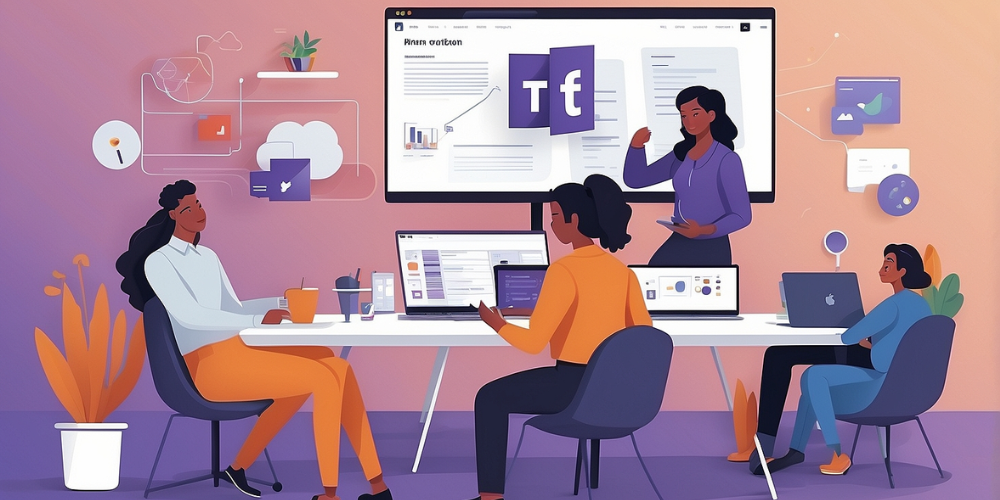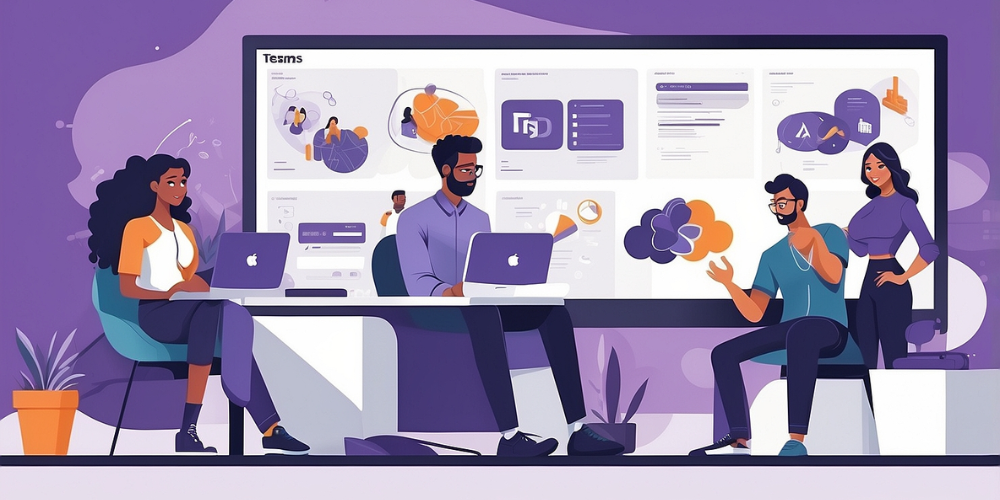Exploring the Features of Microsoft Teams for Remote Work
- Oct 08, 2024
- 391

As I embarked on my journey of remote work, I soon discovered Microsoft Teams to be an indispensable tool. It seamlessly combines communication, collaboration, and productivity features, making it a go-to platform for many professionals. Initially, I was intrigued by its interface and what it could offer in terms of team dynamics and project management.
Channels: The Heart of Collaboration
One of the first features that caught my attention was the concept of Channels. Within Teams, each project or topic can have its own channel. This organization helps keep discussions focused. I found it particularly useful to have conversations categorized under specific headers, allowing me to locate information quickly. Whether it was a brainstorming session or a project update, each channel served as a dedicated space, minimizing clutter and confusion in conversations.
Chat: Instant Communication at My Fingertips
The chat feature felt like a natural extension of my daily messaging habits, providing instant communication with my colleagues. Whether it was a quick question or a longer discussion, I could engage in one-on-one chats or group conversations without leaving the platform. The threaded replies ensured that discussions remained easy to follow, making it simpler to catch up on important conversations.
Video Conferencing: Connecting Face-to-Face
Video conferencing is an essential aspect of remote work, and Microsoft Teams equipped me with high-quality video meetings. I was pleasantly surprised by the clarity of audio and video quality. Virtual meetings felt more personal, fostering relationships among team members who lived miles apart. The ability to share screens or present documents in real time added depth to our discussions, enhancing collaboration.
File Sharing: Easy Access for Everyone
An outstanding feature that quickly became a favorite of mine was file sharing. Microsoft Teams integrates with OneDrive and SharePoint, enabling me to upload and share documents easily. This was a game-changer for collaborative work, as everyone could access the latest version of a file without the confusion of multiple email attachments. I loved being able to work on documents simultaneously with colleagues, making edits in real-time.

Integrations: The Power of Apps
Microsoft Teams offers numerous integrations with other apps I already used. This feature simplified my workflow since I didn’t need to switch between different software constantly. I connected apps like Trello, Asana, and Google Drive, allowing me to streamline tasks and maintain productivity without breaking my rhythm. It felt liberating to have everything I needed in one location.
Meeting Scheduling: Organizing My Time
Scheduling meetings can often be a hassle, but Teams made this task significantly easier for me. By integrating with Outlook, I could see my calendar within the app. Setting up meetings was as simple as checking availability and sending invites. The integration helped eliminate misunderstandings about time zones and ensured that my team and I could coordinate our schedules effectively.
Background Effects: Personal Touch to Meetings
During meetings, I appreciated the ability to customize my background or blur it. This feature added a personal touch to my video conferences, allowing me to maintain a level of professionalism even if I was in my living room. It also helped minimize distractions on my side, allowing my colleagues to stay focused on the conversation at hand.
Recording Meetings: Capturing Important Discussions
I found the option to record meetings particularly valuable. Capturing discussions allowed me to revisit important points or decisions made during a call. This was especially useful when team members couldn’t attend a meeting. I could share the recording later, ensuring everyone was kept in the loop.
Task Management: Staying on Top of Projects
Within teams, I discovered the task management capabilities that complemented my work style perfectly. The Planner app enabled me to create tasks, assign them to colleagues, and set due dates. I appreciated how this feature kept project timelines visible and ensured accountability among team members. It was fulfilling to see progress made as tasks got completed and moved to the "Done" column.

Notifications: Staying Informed
Navigating through multiple channels and conversations made me realize the importance of notifications. Microsoft Teams allowed me to customize alerts for messages, mentions, and other activities. This feature ensured that I didn’t miss any critical updates while also preventing notification overload. I felt empowered to manage my time effectively with tailored notifications.
Activity Feed: One-Stop for Updates
The activity feed became my information hub. This feature compiled all relevant updates in one place, highlighting mentions, replies to my comments, and actions taken on my posts. I no longer had to sift through countless messages; the activity feed organized everything, keeping me informed and on track.
Shifts: Managing Team Schedules
If your team operates on shifts, Teams has a Shifts feature that simplifies shift scheduling. I witnessed firsthand how this tool can help manage availabilities, create schedules, and communicate changes effectively. It brought clarity to our team's workflow, and each team member appreciated the transparency it offered in scheduling.
Webinars and Live Events: Expanding Our Reach
The ability to host webinars and live events through Microsoft Teams opened new avenues for our organization. I attended several external training sessions and Q&As, connecting with industry experts. These events allowed us to engage a larger audience, enhancing our brand visibility and fostering a sense of community even beyond our immediate team.
Security: A Safe Space for Collaboration
Security features were essential for me. Microsoft Teams adheres to stringent security and compliance protocols, ensuring that our communications and data were secure. Knowing that sensitive information was encrypted gave me peace of mind while conducting business remotely. This focus on security reassured our clients as well, strengthening our professional relationships.
Accessibility: Inclusive Options for All Users
I was impressed by the accessibility features integrated into Microsoft Teams. These options enabled customization for users with varying abilities. The ability to use keyboard shortcuts, screen readers, and high-contrast settings ensured that everyone, regardless of their needs, could effectively navigate the platform. This inclusiveness is vital in fostering an efficient and equitable remote working environment.
Final Observations: The Continual Evolution of Teams
Throughout my time using Microsoft Teams, I have witnessed its continual evolution. Regular updates and new features have further enhanced my experience, making it easier to collaborate and communicate. As remote work becomes increasingly prevalent, I believe that tools like Microsoft Teams will only become more essential in connecting teams and keeping productivity on track.